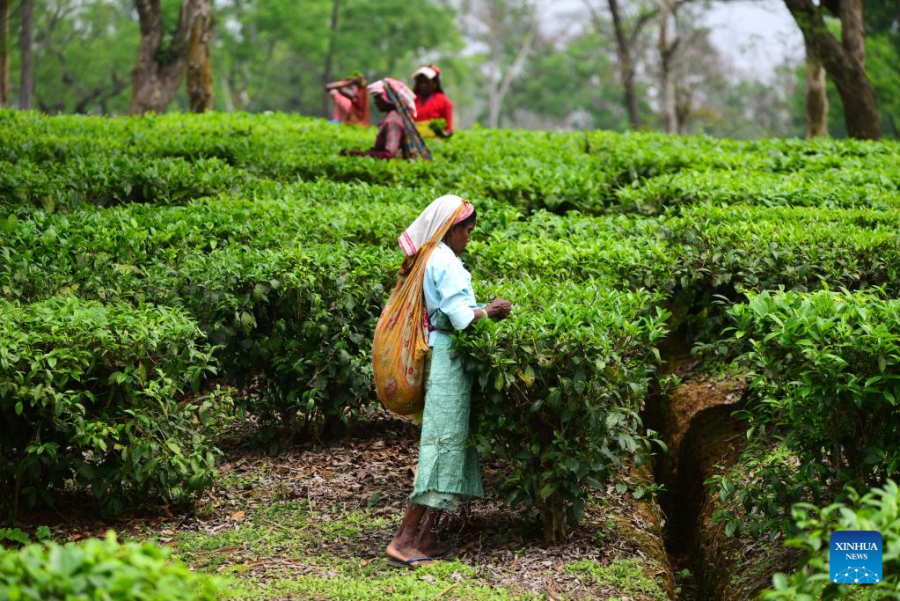Tea History

Tea History of India,Sri Lanka and Kenya
Tea History of India
China is the original home of tea.In 1788,the British botanist Joseph Banks reported to East India Company that certain parts of north-eastern India were ideal for tea growing and suggested transplanting Chinese tea bushes into these areas.It was 1823 and the Scottish adventurer Robert Bruce had just visited Assam, India. He reported seeing a growing wild tea plant in some hills near Rangpur(Sivasagar today in India) on a trade mission.
Wild trees may have been growing in Assam since then but it wasn't cultivated in India until British started introducing Chinese tea plants to India and cultivating and processing on a commercial scale in the 1830s and 1840s.
The East India Company preferred Chinese tea trees in spite of the discovery of local tea trees in India.The Chinese teas was better than the Assam counterparts because it could withstand cold weather and high altitude of Darjeeling.Botanist Robert Fortune was sent by the East India Company to China to introduce tea seeds and tea plants as well as learn about the know-how and tacit knowledge behind teas in Chinese inland. Fortune shipped out both tea seeds and tea seedlings from China to India between 1848 and 1851.
The upper and middle classes in England had eagerly taken to the beverage of choice, Chinese tea. In 1800 they were drinking about 20 million pounds worth teas sold by East India Company to Britain!Tea, conjoined with sugar from the Caribbean colonies became a staple of British diets. This tasty food would later go on to signify taste and refinement in East Asia as well for many years after its introduction by British Empire.
With the long transit time and high prices for tea, trade imbalance occurs between China and Britain, this led to East India Company wanted stable sources of teas that could be grown in India.In 1835, the first cultivars were planted in Assam India though it would be more than a decade before large-scale tea plunking began. The 1870s were a time of change for Assam and Darjeeling.In order to take advantage, many tea planters in India began private plantation with larger quantities at cheaper prices compared with Chinese teas.
As the British Empire expanded, so too did their appetite for tea.By 1888 India had taken over China as a supplier of this popular drink and they were supplying 57% percent to Britain's market!
Tea History of Sri Lanka
The small, vibrant island nation of Sri Lanka (formally called Ceylon) is famous for the high-quality tea that it grows and produces using traditional methods.The switch from coffee to tea was a unfortunate event for the Sri Lanka's economy. It began in 1869 when a devastating blight infested most of their coffee plantations, leading them into an even worse situation than before.The export of coffee from Ceylon had fallen to less than a tenth of its zenith by 1890. When the plant could no longer grow coffee, many estates converted their efforts into tea planting instead of it!The British had a monopoly on tea production in Ceylon, and they controlled the majority of its plantations. After droughts caused famines in India in 1877,many Indian workers came to work on Ceylon's tea plantations. Many Indian people from Tamil went to Ceylon to work for tea industry in the same year.The large numbers of immigrants of Tamil came to Ceylon during the nineteenth century,who were deeply resented by locals. This led to devastating ethnic conflicts that exist in Sri Lanka today.
Tea History of Kenya
The history of tea in Kenya can be traced back to 1903,when the British introduced it on a limited scale.The 1920s saw two British companies Brooke Bond and James Finlay,change the game when they were able to purchase massive amounts of land very cheaply,although there was some controversy.The British government made land available to World War I British veterans in Kenya, which naturally got resentment from the African landowners.The ex-offices of Britain were able to create a successful plan for growing flax in Twenty Five Thousand acres. Unfortunately, the market collapsed and this enterprise fell apart due its failure.The land was put up for sale at nearly nothing and it quickly disappeared into the hands of two companies, James Finlay (now called African Highlands) and Brooke Bond. They were both determined to grow tea there because that is what they do best!The British were the first to cultivate tea in Kenya, with their plants growing on there by 1976. The Kenyan government finally stopped further expansion when it realized how much control they had lost out on this venture; however other companies took up 50,000 acres of tea land where these laid down,and Brooke Bond was the biggest owner.
The Kenya Tea Development Authority Insurance Agency was founded in 1976. This organization,funded by the World Bank and encouraged individual African landowners to grow tea on their land.The project has allowed for the tea production in Kenya to increase exponentially. With 60% coming from small land owners,a landowner only planted a small amount, usually only about one acre.
On June 2000, this group changed from being a parastatal agency (one wholly or partially owned by the government) to public company. The name of their business became Kenya Tea Development Agency KTDA
*** If you are interested in purchasing good quality tea, please kindly visit admiringazeland.com.
0users like this.




